NGC 7000 - North American Nebula
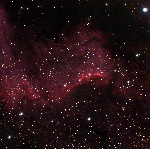 |
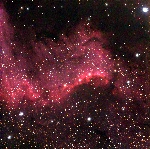 |
| Imax=1.40 | Imax=0.70 |
SBIG ST-4K, 4200s total exposure 9/25/14 Lake San Antonio, CA
This image shows the 'Mexico' region of the North American nebula, which includes some of the brightest and most interesting structures.
IC 1805 - Heart Nebula
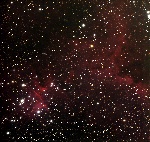 |
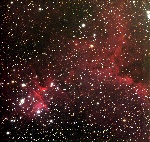 |
| Imax=1 | Imax=0.60 |
SBIG ST-4K, 4500s total exposure 9/25/14 Lake San Antonio, CA
The field of view here is too small to see the 'heart' shape. Our interest was to capture the three dark pillar structures appearing in the right portion of this image, with their unusual webbed and twisted appearance.
M45 - Pleiades
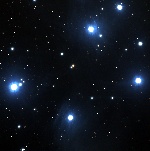 |
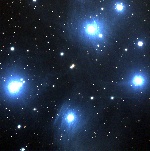 |
| Imax=5 | Imax=2 |
SBIG ST-4K, 1800s total exposure 9/25/14 Lake San Antonio, CA
This image includes 5 of the 6 brightest stars in the well-known Pleiades cluster: Alcyone (left), Merope (bottom), Electra (right), Maia (near top), and Taygeta (extreme upper-right). Visually, some of the reflection nebula can be seen as a faint haze, but it is difficult to distinguish it from the scattering one might expect from dirt or condensation on the optics. Here, the reflection nebula has the appearance of cirrus clouds, with a fine texture and long streaks traveling in several directions.
M20 - Trifid Nebula
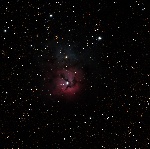 |
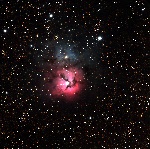 |
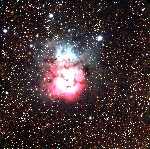 |
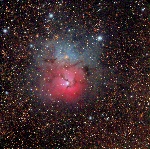 |
| Imax=10 | Imax=3.50 | Imax=1 | Nonlinear |
SBIG ST-4K, 1800s total exposure 9/26/14 Lake San Antonio, CA
We finally used the new camera to get a reasonably deep exposure of the Trifid nebula, which presents a beautiful combination of emission, reflection, and dark nebulae.
IC 5146 - Cocoon Nebula
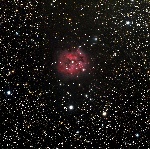 |
| Imax=1 |
SBIG ST-4K, 2700s total exposure 9/26/14 Lake San Antonio, CA
With its round shape and combination of emission, reflection, and dark nebulae, the Cocoon Nebula in Cygnus has some similarity to the brighter Trifid nebula. Note that in addition to the dark patches in front of the emission nebula, there is a much larger surrounding dark region (part of dark nebula B168) where the background stars are obscured.
UGC 12613 - Pegasus Dwarf Irregular Galaxy
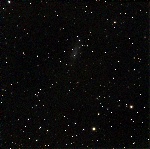 |
| Imax=0.70 |
SBIG ST-4K, 2700s total exposure 9/26/14 Lake San Antonio, CA
UGC 12613 is another nearby galaxy in our local group, at a distance of about 3 million light years, in the constellation Pegasus. It was too faint to see visually, and we had to search for it using test exposures. In this image we see only the brightest central portion, which appears as a faint smudge.
M31 - Andromeda Galaxy
 |
 |
 |
 |
 |
| Imax=160 | Imax=20 | Imax=2.50 | Imax=1 | Nonlinear |
SBIG ST-4K, 3000s total exposure 9/26/14 Lake San Antonio, CA
This was an attempt to image all of M31 through a mosaic of three exposure locations. We captured most of it, but perhaps could have benefitted from an even larger field of view. The most interesting parts to me are along the outer edge, where individual blue stars and a few nebulae can be seen.
IC 443
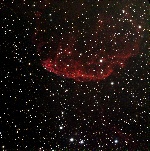 |
| Imax=1 |
SBIG ST-4K, 2700s total exposure 9/26/14 Lake San Antonio, CA
IC443 is a supernova remnant in Gemini with a rich filamentary structure. We were not sure what to expect when we decided to image it, and we ended up centering on the brightest edge.
M56
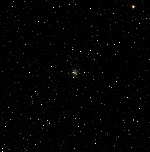 |
| Imax=18 |
SBIG ST-4K, 900s total exposure 9/27/14 Lake San Antonio, CA
We shouldn't forget to look at a new globular cluster every now and then.
IC 4955
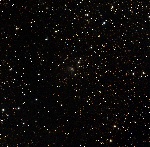 |
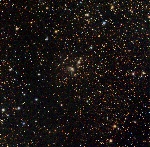 |
| Imax=2 | Nonlinear |
SBIG ST-4K, 2700s total exposure 9/27/14 Lake San Antonio, CA
This reflection nebula consists of several faint wisps around a loose star cluster. A well-defined edge is visible on one of them.
NGC 253
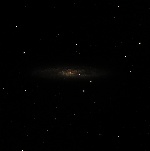 |
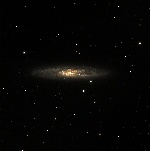 |
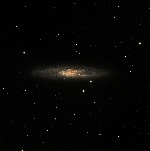 |
| Imax=10 | Imax=3 | Nonlinear |
SBIG ST-4K, 3000s total exposure 9/27/14 Lake San Antonio, CA
Here is NGC 253 in all its glory, a giant peppermint candy swirl of star-stuff and galactic dust. This is one of the (apparently) largest and brightest galaxies, but it is also rather far south (declination -25°). With the new camera we were finally able to capture the entire galaxy in a single exposure.
NGC 1501
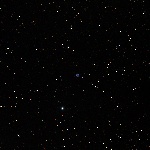 |
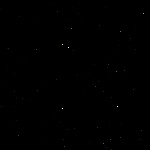 |
| Imax=6 | Imax=100 |
SBIG ST-4K, 1200s total exposure 9/27/14 Lake San Antonio, CA
This happy blue planetary nebula in Camelopardalis surprised us with its interesting color and texture.